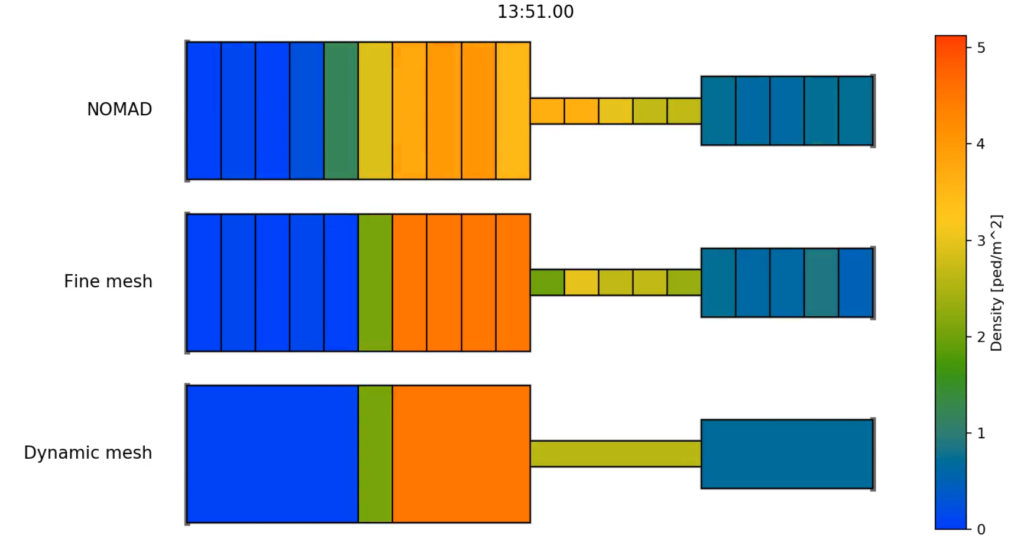From: Martijn Sparnaaij (TU Delft)
Last edited: 29 June 2020
Forecasting in real-time of how a crowd is likely to move in the next 15 minutes can be of great value to crowd managers. For example, it can tell the crowd managers that a certain area will become too crowded, based on which the crowd manager can, pro-actively, take measures to prevent this from happening. In this way they can increase the comfort and safety of everybody in the crowd compared to when they can only respond when they see it’s already too crowded somewhere. And luckily, many pedestrian models exist nowadays that can model the movements of crowds. However, the models that can predict these movement accurately are very slow and hence they cannot provide these prediction in real-time. To face this challenge two different approaches are being developed at Delft University of Technology.
Firstly, a new type of model called a “Dynamic Hybrid Model” is being developed. This model makes use of the fact that, next to the slow but accurate models, there also exist many models which are much faster and can model many of the crowd movements accurately. By only using the slow, but accurate, models in those locations and for those moments that these faster models can’t provide an accurate prediction of the crowd movement, the whole simulation can be sped up. And this speed-up enables this model to provide accurate forecasts in real-time.
The second approach that is being developed is a so-called “Database-driven approach”. The idea behind this approach is that, for a particular event of for a particular location, you simulate many different scenarios of crowd movements that can potentially occur before you actually need the real-time forecast for this event or location. The result of all these simulations are stored in a database and when you need the real-time forecast, a smart algorithm will look in this database and select the scenario that most accurately will predict how the crowd will move in the next 15 minutes. Because the simulations are done beforehand, you can use the existing slow, but accurate, models to do these simulations.

